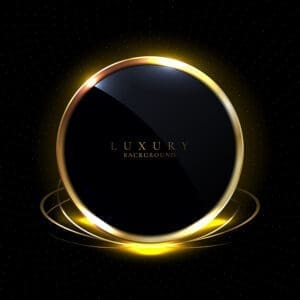 The Dorchester Collection set the “challenge” for this year’s Young Hotelier Summit – to design a Hotel Organisation for the Future keeping in mind the view the rigid hierarchical organisation structures of hotels are no longer “fit for purpose” and need to change to be able to cope with the dynamic and disruptive environment now, and of the future.
The Dorchester Collection set the “challenge” for this year’s Young Hotelier Summit – to design a Hotel Organisation for the Future keeping in mind the view the rigid hierarchical organisation structures of hotels are no longer “fit for purpose” and need to change to be able to cope with the dynamic and disruptive environment now, and of the future.
The challenge was to design a “disruptive” organisational structure that creates the internal structure and environment to be able to innovate, be creative and to continue to secure competitive advantage.
This challenge was set following from the Dorchester Collection presentation to the summit on “Disruptive Organisational Design”. The Dorchester Collection challenged the student groups to consider how the current “silo” approach to organising and managing hotels needs to radically change towards organic networks that supports the delivery of the guest experience while fostering an encouraging, creativity, entrepreneurship, and innovation throughout all parts of the organisation.
With a collection of “iconic hotels in iconic places” that are known for their own unique identities, heritage and positioning, any new “disruptive” approach must also be able to reflect the cultural dynamics and constraints of the Dorchester Collection brand. All of this whilst maintaining the iconic brand behaviour and identity of the individual properties. Some could suggest that trying to create a disruptive organisation within an industry that has been based on formalised hierarchical structures for generations, would be akin to trying to get polar opposites to attract, or pig’s to fly.
An interesting challenge for students of the millennial generation at that stage in their professional careers where thinking out of the box or even changing the box is the sort of challenge that will be relished. And so it proved. Much of the innovation and creativity came from the ideas of establishing and staying connected through different networks, activities that could be seen as defining features of this generation. How this translated into actual structural change was interesting to observe.
Communication, Collaboration, Connectivity and Empowerment
From all 12 group presentations, the groups being selected at random from the 62 students present representing 31 schools, a number of themes emerged that could be characterised by, communication, collaboration, connectivity and empowerment. These things were present in one form or another in every presentation. Sometimes prominently sometimes slightly disguised.
In summarising these themes they could be represented by the equation;
C3= E2
This suggests that where good communication and excellent connectivity work together within organisations, it significantly improves the opportunity for collaboration, which in turn leads to greater empowerment of the staff in taking decisions that will improve both the staff and the customer experience. This reflects my summary of the individual groups ideas, considered with the benefit of not being in the intense pressure of developing solutions, within a short timeframe and working within groups where the individuals had not previously met.
The individual groups presented their solutions imaginatively often using analogies as wide ranging as bicycles, hot air balloons, juggling, flower heads, the human heart, to the helix of DNA and atomic structures. The spectrum of potential organisational structures ranged from the extreme of a constantly revolving helix, to variants of network structures of varying complexity to adaptations and developments of the more traditional.
New roles, new titles
For some groups, new creative roles were envisaged with titles that reflected the ideas of connectivity. For example, network integrators, passion boosters, insighters, pilots and co-pilots were all considered as future roles that would facilitate the passage of communication throughout the new look organisations.
Changing behaviour within the organisation was linked to this idea of new roles in new posts And some of the groups highlighted the importance of gathering and retaining “intelligence” not just on the needs and wants of guests but also in ensuring the information flows from the staff get to where in the organisation it makes a difference to the guest experience. This idea of “institutional and collective memory” is a very important one. It exists within all organisations but is rarely if ever formalised. The people that hold that collective memory are often those least recognised. It is this idea of changing the structure that highlights the need to be able to capitalise on this “collective memory”.
Guest experience a consistent theme
For all of the groups the importance of maintaining and enhancing the guest experience was paramount, the route to implementation of their individual ideas was the defining factor in terms of selecting the winning groups. With only 10 minutes to present their ideas followed by 5 minutes of questioning from the representatives of the Dorchester Collection, the students tackled this with confidence, purpose and a very positive often humorous approach. They were extremely professional representatives not only of their group but also of their schools.
The winning group develop the idea of a “Internal Concierge”. They identified that within hotels the concierge is often the “fount of all knowledge” in meeting the guest requirements, the idea of having a similar role internally within the organisation to meet the staff requirements clearly captured the imagination and the interest of the Dorchester Collection. The focus of their concept was to improve communication flows across and within staff and to further develop this idea of the collective memory. They saw the role as short-term and more of a transitionary post for somebody to take up a further position within the organisation. This may have an impact on the ability to retain that collective memory and to pass it on, but was certainly an interesting idea that could be implemented fairly quickly. Of all of the ideas suggested this was probably the least radical as it didn’t fundamentally change the existing organisational structures, but had the benefit of being a simple change that could make a real difference.
The title of the challenge was around “Disruption”, I would be suggest that in an industry which is seeking to provide a seamless guest experience, the notion of disruption could be taken to be a negative rather than a positive. This rather begs the question was the challenge about causing ‘disorder’ in organisations or was it really to encourage a more adaptive learning design, where informal networks, that always exist in organisations, have greater prominence and recognition?
Professor Peter A Jones MBE, Dean eHotelier Academy attended the YHS Summit at Lausanne.
About the Author: Professor Peter A Jones MBE
 Professor Peter Jones is the Dean of the eHotelier Academy. With a distinguished career in hospitality, education and training, Peter has been involved with national and international projects with clients involved in hospitality education. Peter is a Director the Edge Hotel School and of Hotel Future, a new education and training initiative in Greater Manchester and is a Visiting Professor at the University of Derby. He was also awarded a Member of the Order of the British Empire for services to the hospitality industry.
Professor Peter Jones is the Dean of the eHotelier Academy. With a distinguished career in hospitality, education and training, Peter has been involved with national and international projects with clients involved in hospitality education. Peter is a Director the Edge Hotel School and of Hotel Future, a new education and training initiative in Greater Manchester and is a Visiting Professor at the University of Derby. He was also awarded a Member of the Order of the British Empire for services to the hospitality industry.



















